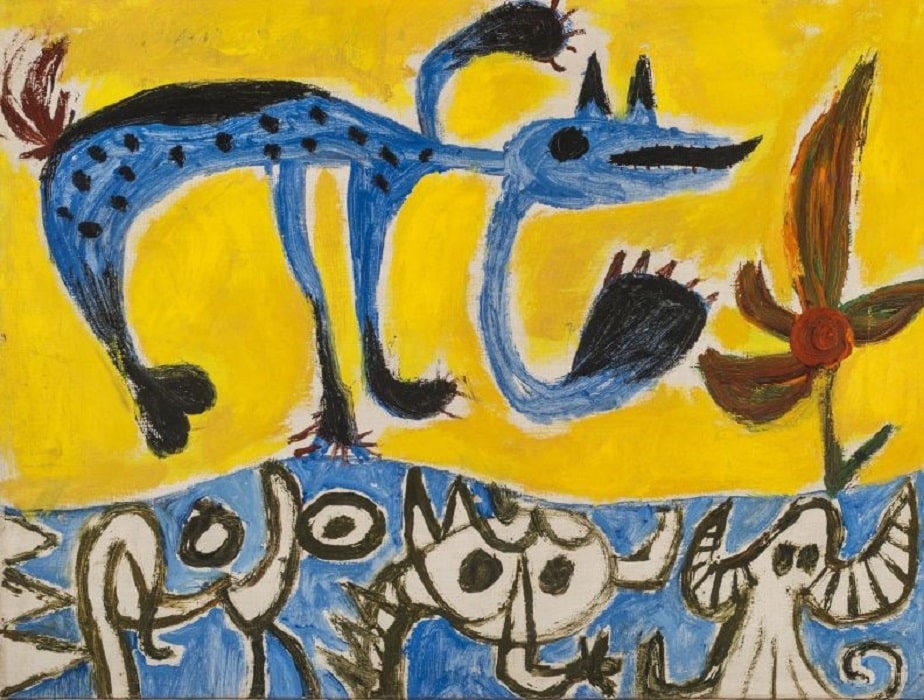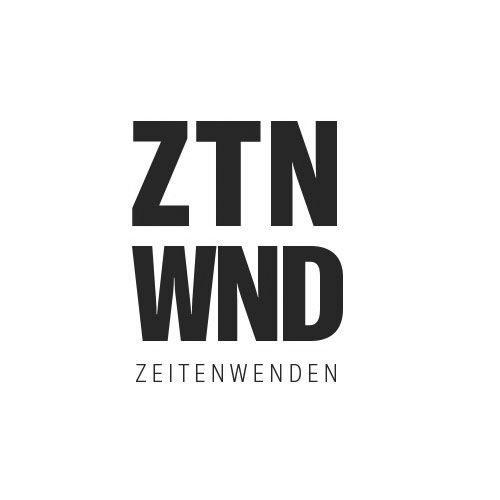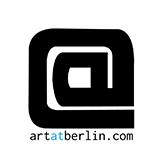With the exhibition “Becoming CoBrA. Beginnings of a European Art Movement”, the Kunsthalle Mannheim takes a look at the origins of one of the most influential avant-garde groups in the 20th century, which date back to the 1930s. While the years from 1948 to 1951, during which CoBrA existed as a firmly defined group, have already been the subject of much discussion, the show focuses on the preceding, hitherto little-explored process of the artists’ collective’s emergence.
Image above :Constant, Fantastische dieren / Fantastic Animals / Fantastic Animals, 1947, Kunsten Museum of Modern Art Aalborg, Netherlands
In the context of the exhibition, around 150 paintings, sculptures, graphics, photographs, textile works and ceramics by later members of the trans-European collective provide insights into the creative cosmos of CoBrA before it was founded. They show how, already in the context of the Second World War and the immediate post-war period, a new avant-garde was formed that stood for peace, international understanding and a redefinition of artistic modes of production.
Origin in Scandinavia
The name of the movement is composed of the initials of the cities Copenhagen, Brussels and Amsterdam, where the founding members come from. Denmark is the setting where artists such as Asger Jorn, Ejler Biller, Else Alfelt and Henry Heerup began to explore the essential themes of the later CoBrA movement as early as the mid-1930s. Sources of inspiration for the women artists were, besides the art of non-European cultures, Scandinavian mythology, the directness of so-called art brut, but also the art of children. “Like other historical artists’ associations, CoBrA was on the one hand in search of a new language, new role models and sources of inspiration, and on the other hand it clearly set itself apart from positions that were considered conventional and outdated, both artistically and socially,” says Dr. Inge Herold, one of the curators of the exhibition. In the immediate post-war period, the Danes quickly established contact with artists such as Pierre Alechinsky, Karel Appel or Madeleine Kemény-Szemere and Zoltán Kemény, who independently dealt with very similar issues. Quickly they join forces
Artist couples and artists from the Czech Republic, France, Scotland, Sweden, Hungary, but also from Germany join the group
Formative war experiences
Although there were country-specific differences, there was agreement on essential points regarding goals and programmes. The war experiences and the associated lack of a freely developing art scene proved to be central. “In this respect, it is not surprising that the artists were concerned with freedom, revolution and distancing themselves from artistic and social conventions,” says curator Christina Bergemann. Formally, the artists were united by an expressive spontaneous painting style and the joy of pure colours. “Fantastic mixed creatures of humans, animals and plants functioned as a symbolic expression of the longing for natural origins, for the unadulterated and the unspoilt. Deliberately naïve and stylised animal motifs, but also mother-and-child depictions were part of the CoBrA artists’ characteristic range of motifs,” adds Dr Inge Herold.
“Becoming CoBrA. Beginnings of a European Art Movement” can be seen in the exhibition rooms on the ground floor of the Hector Building. The exhibition structure follows the geographical centres of the group in Denmark, Belgium/France and others, as well as the Netherlands.
The Deutscher Kunstverlag publishes a catalogue (German/English) with approx. 208 pages and texts by Christina Bergemann, Inge Herold, Karen Kurczynski and Mathias Listl.
WHEN?
Exhibition dates: Friday 18 November, 2022 – Sunday 05 March 2023
WHERE?
Kunsthalle Mannheim
Friedrichsplatz 4
68165 Mannheim, Germany






